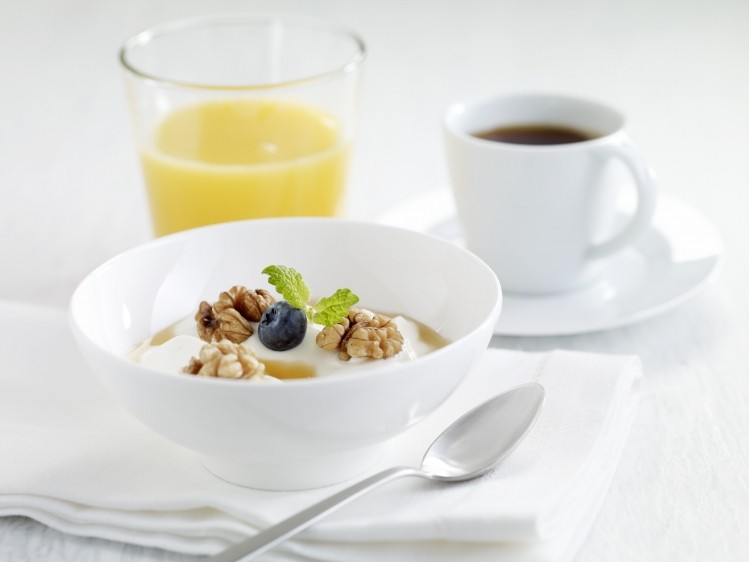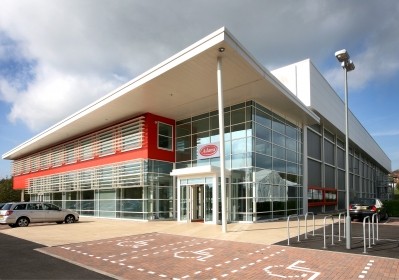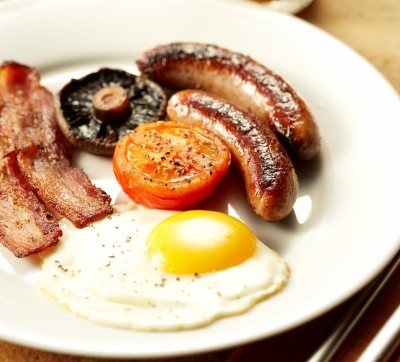Greek yogurts dominating sector

Mainstream consumer interest in high-protein products is growing on both sides of the Atlantic, as people looking for a healthier lifestyle run scared of overdoing carbohydrates or fats. It's also symptomatic of an ageing population, since we all experience a gradual reduction in skeletal muscle mass of between 0.5 and 1% a year after the age of 25. The process is known as sarcopenia and a protein-rich diet can help to slow it down.
Dairy products can be a great source of protein and manufacturers have increasingly been trying to break out of the sports nutrition niche and into the mass market for high-protein products. For instance, Volac launched its Upbeat high-protein dairy drink last year and now has listings in Tesco. “Upbeat is high in protein and low in fat. It contains no more than 150 calories and has less than half the sugar found in leading smoothies and fruit juices,” said brand manager Susie Hignett.
This trend is also one reason the enthusiasm for thick, strained Greek yogurt has been gathering momentum in Europe. Everyday ‘spoonable’ yogurts typically contain 3 or 4% protein, as opposed to strained Greek yogurt at between 6 and 10%.
According to Mintel, the launch of strained Greek yogurts rose by 94% in Europe between 2009 and 2013, while the launch of yogurts carrying a high-protein claim increased by 80% between 2010 and 2013.
Gaining popularity (Return to top)
Buoyed by this momentum, Greek-style yogurts are also gaining popularity. These contain thickeners, rather than being strained in the traditional way. If they’re thickened by adding milk protein concentrates, Greek-style products usually offer higher protein levels.
For example, Arla Foods Ingredients (AFI) offers a solution to boost protein levels in Greek-style yogurts using its Nutrilac-branded milk proteins. These enable manufacturers to use their current yogurt lines to make Greek-style products at up to 10% protein. According to application manager Torben Jensen, the solution is selling well, especially in Greece, where products are called ‘protein fortified’ and not Greek-style.
However, Greek-style yogurts don’t always deliver elevated protein levels, because they may be thickened using other texturising ingredients.
The terminology regarding Greek-style products can be ambiguous, with different markets taking different approaches. “In Europe, some countries see it as an indulgent product. While, in the US, it’s seen as a low-fat, high-protein product. In countries such as France and Spain, Greek-style is just high-fat stirred yogurt, because there's no clear definition of the protein levels required,” says Jensen. “That’s why we’re not yet seeing quite the same boom in Europe as in the US, where Greek yogurt is seen as more nutritious and healthy.”
Geographical debate (Return to top)
Then there’s the thorny question of whether Greek yogurts should be made in Greece. In other words, is the term ‘Greek’ a geographical designation or does it simply indicate a type of product?
In the UK, Chobani lost a battle with the dairy processor Fage earlier this year and can no longer label its yogurts ‘Greek’, since they’re made elsewhere. Danone now also describes its strained products in the UK as ‘super thick’ and ‘high in protein’, rather than ‘Greek’.
European consumers have a growing appetite for thicker, high-protein yogurts, despite the arguments over terminology.
The main reason the Greek-style fortification approach is so appealing is that it costs more to make Greek yogurt in the traditional way than it does to make ordinary stirred yogurt. In everyday yogurt production, virtually all of the milk entering the process ends up in the final product.
In contrast, every 100kg of milk makes just 33kg of yogurt in the traditional Greek yogurt process. The rest is strained off as whey. The resulting whey is acidic – unlike the whey from rennet-based cheese making – which makes it difficult to use or dispose of. In fact, the problem of acid whey has led to growing environmental concerns as strained yogurt output continues to expand.
In the middle of last year, AFI expanded its Nutrilac milk protein range to include ingredients that can be added successfully to transform acid whey into a range of products, including fermented beverages, whey smoothies and dairy desserts.
It’s too early to point to products in the shops, says Jensen. But interest in AFI’s acid whey solution has been positive. “It normally takes one or two years for customers to develop products using our solutions, with consumer testing, shelf-life testing and so on, but we can definitely say we've got a lot of requests,” he adds.
Jensen also believes that AFI is the only supplier so far to offer a fully commercialised solution for acid whey, although various patents and research papers for alternative solutions have been appearing. For instance, Glanbia Nutritionals was granted a US patent in February for a way of making better-tasting acidified whey proteins.
Challenges (Return to top)
Acid whey may be especially challenging when it comes to use and disposal, but it’s the so-called sweet whey from cheese-making that accounts for the greatest volumes. Around 81Mt of liquid whey was produced by approximately 150,000 European cheese makers in 2011, according to recent figures.
However, the European Whey Products Association says that only 40% of the liquid whey in Europe is currently used in food and human nutrition or in feed applications. The rest is dumped into the sewage system, mainly by small and medium-sized dairies, where the volumes generated by each production unit are too small to be economically useful in conventional processes for whey protein concentrate (WPC) production.
Now a new project aims to shift the economics and enable cheese makers processing as little as 5,000 litres of milk a day to extract valuable whey protein fractions. Whey2Food is led by research partners in Germany (the University of Hohenheim and the Fraunhofer IGB) and Belgium (the Vito institute), working with commercial partners from across Europe. The latest of these is the UK-based product development specialist International Food Network, which joined Whey2Food in April.
“Large manufacturers have tonnes of whey and can already use it, but this sector is very fragmented, with a lot of family businesses and farmers in cheese-making. They account for about 60% of the whey produced in Europe,” says Dr Ana Lucia Vásquez, who heads the Whey2Food project at the IGB.
Production (Return to top)
WPC is typically produced by ultrafiltration, but this separates all the proteins together, rather than as potentially more-valuable fractions with specific nutritional or functional properties. The ultrafiltration membranes are also prone to fouling, leading to frequent downtime and expensive cleaning regimes.
The process under development by Whey2Food combines membranes with an electric field that separates proteins according to their size and electrical charge. It also reduces the cleaning required, according to the researchers.
“Our process is much more efficient than ultrafiltration because you don’t get the fouling and you don’t have to clean or replace the membranes so often,” adds Vásquez, who says the project should be ready to move to a pilot stage next year.
So, could the Whey2Food process also provide an answer for acid whey? According to Vásquez, there’s no obvious technological barrier, but she stresses that the focus for now is on optimising the process for sweet whey, where the project partners estimate they could generate new whey sales worth almost 21M within 6.5 years of project completion.

















